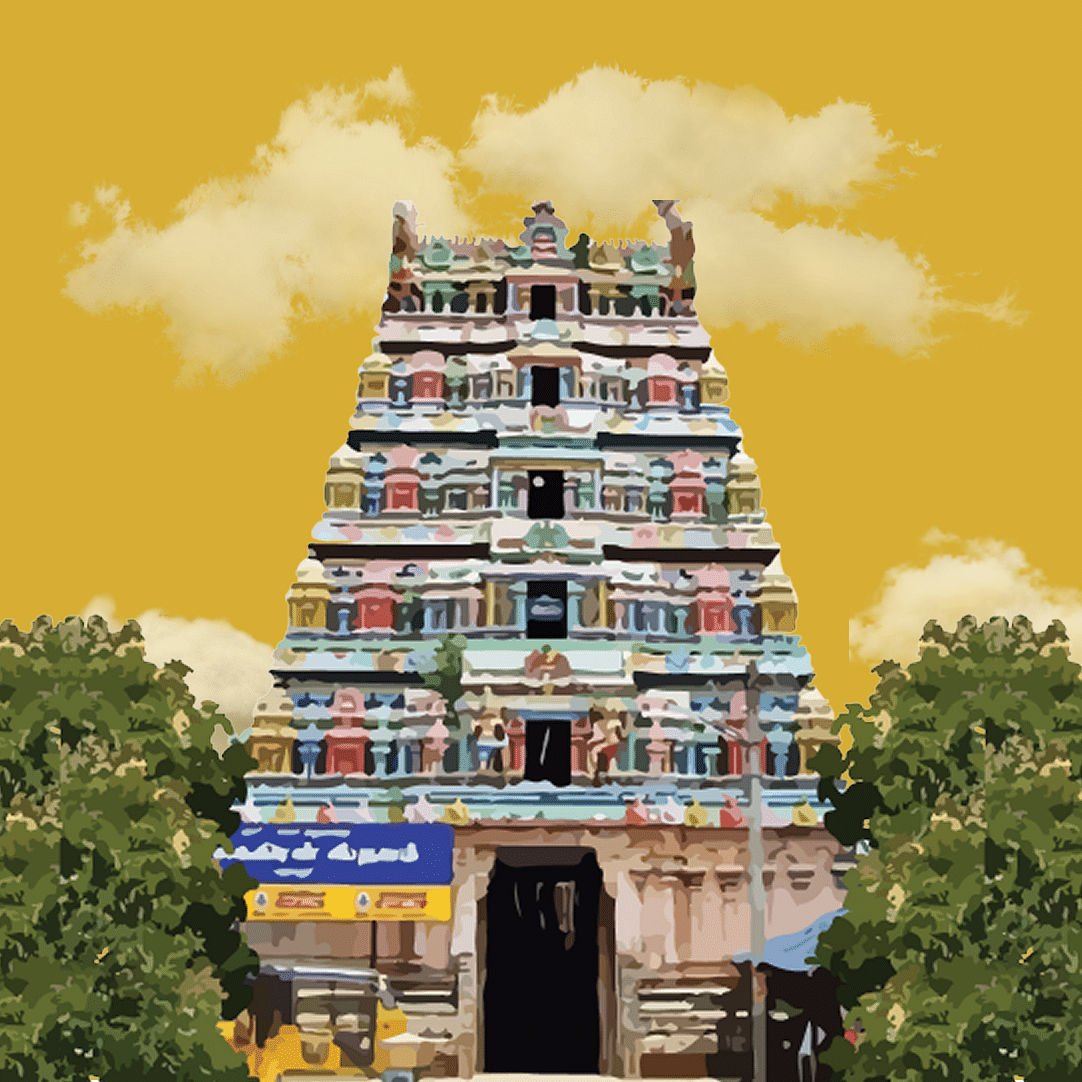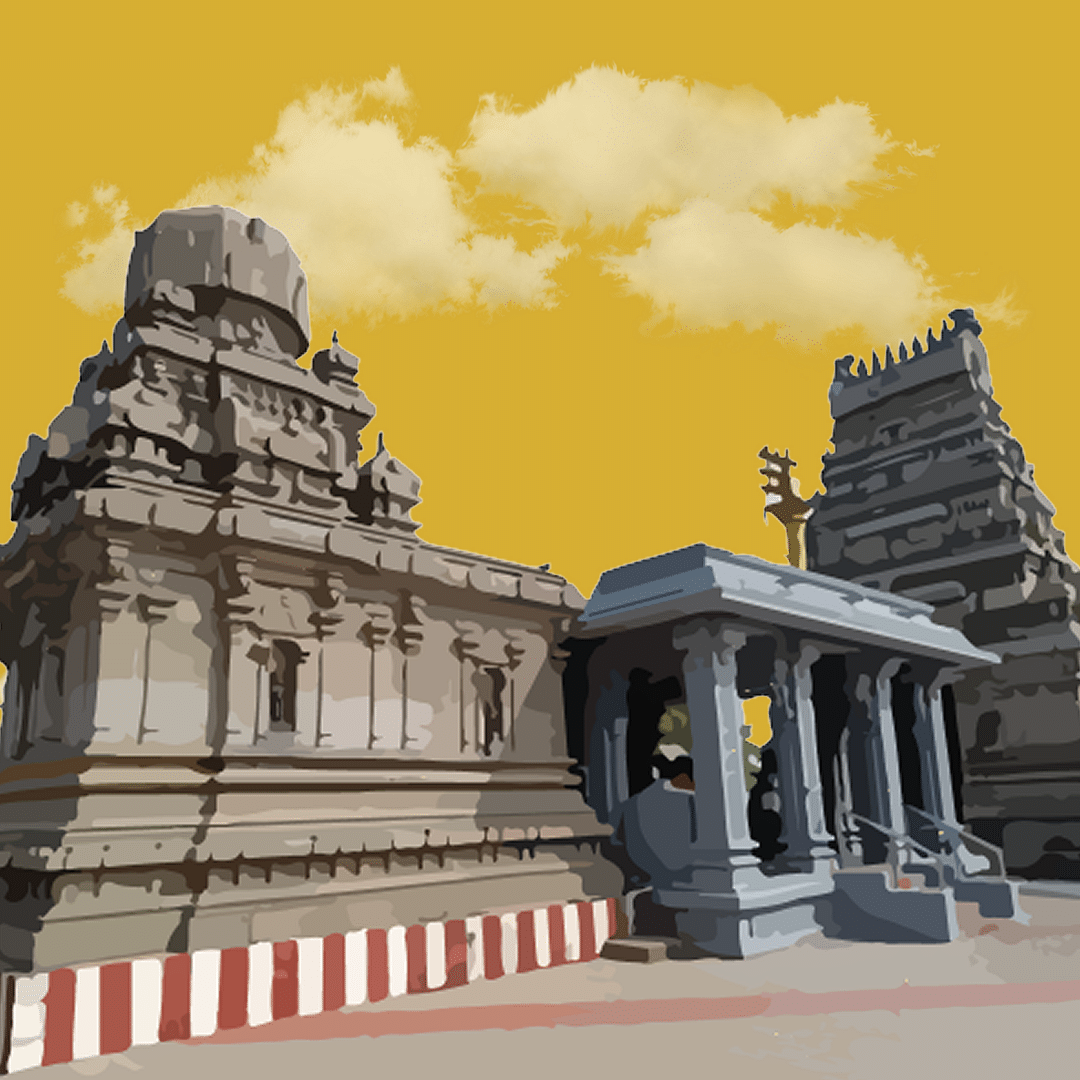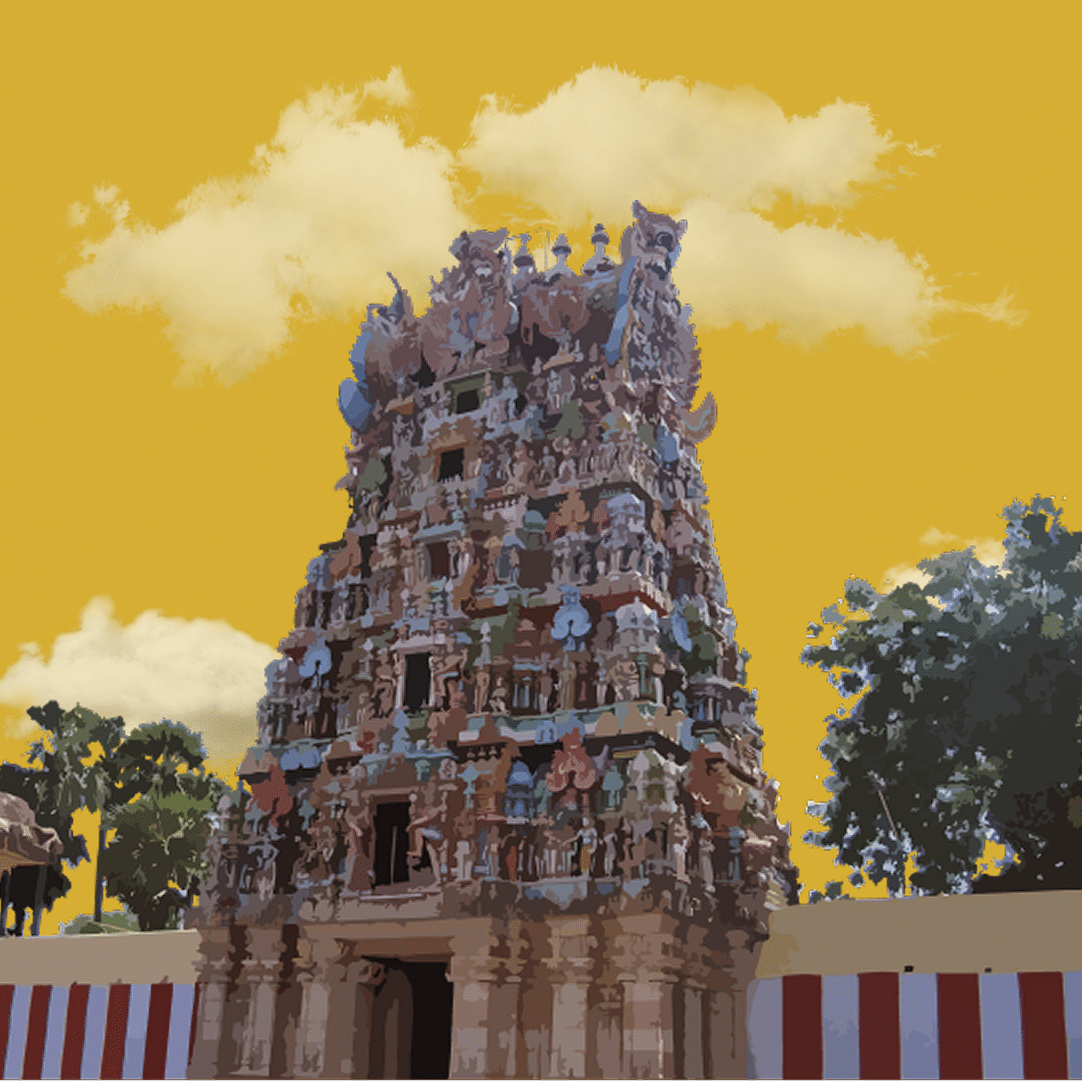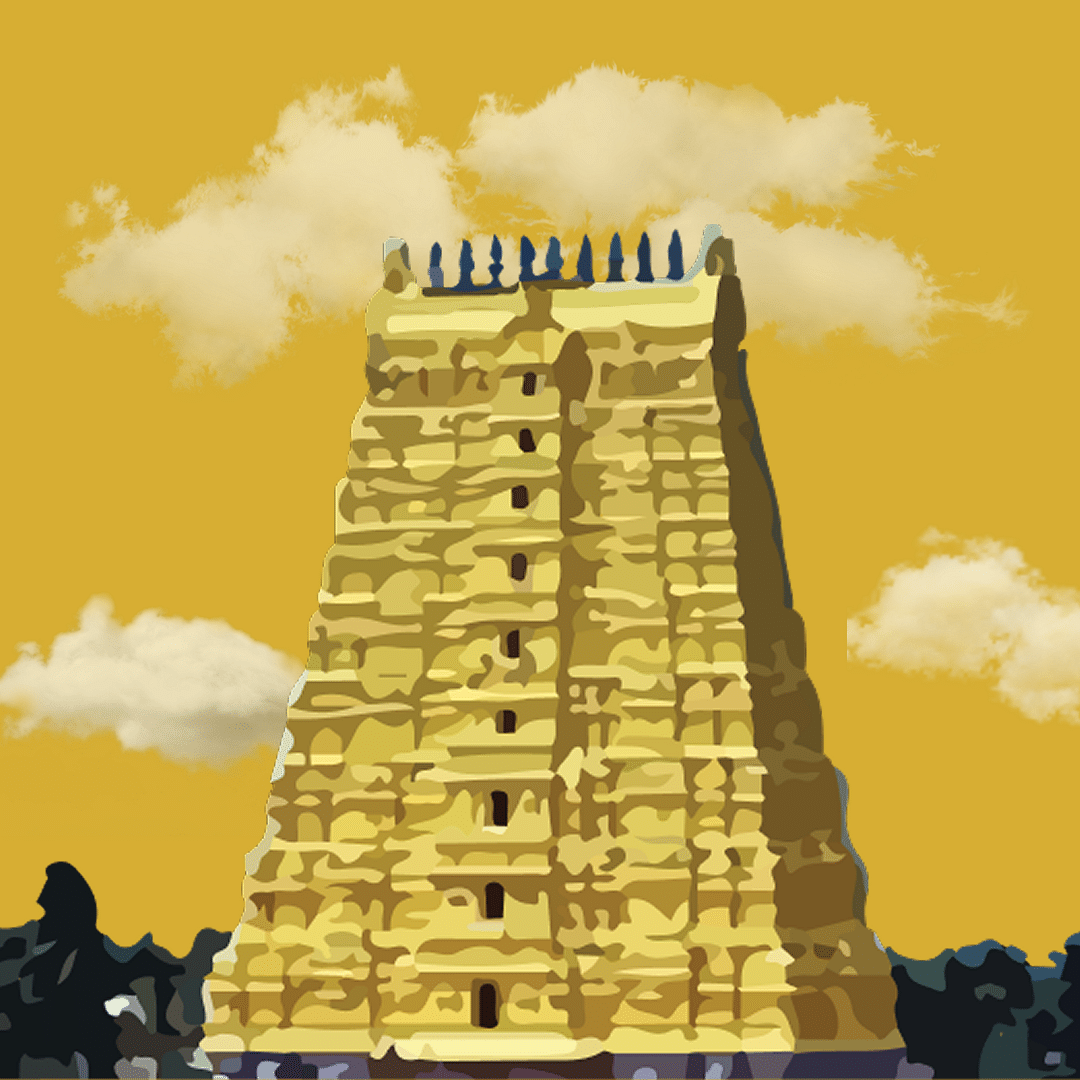Home > The GReaT Divine Darshan > Kodaikanal
HOLY PLACES
IN KODAIKANAL
Kodaikanal isn’t just a hill station—it’s Tamil Nadu’s chill button. Draped in mist, smelling like eucalyptus and existential peace, and guarded by monkeys who clearly run the place, Kodai is the kind of town that puts cosy in capital letters. They call her the Princess of Hills, but honestly? She’s more like that effortlessly cool cousin who shows up in oversized sweaters, serves hot chocolate with life advice, and disappears into the fog before you can ask where she buys her scarves. One minute you’re boating on a lake shaped like a star (because circles are for amateurs), and the next, you're mid-trek, locking eyes with a bison who looks like it skipped leg day but still owns the trail. But hey, it’s not just mist and mushrooms here. The temples in Kodaikanal are like surprise plot twists—serene little sanctuaries that pop up just when you thought you were here only for selfies and homemade chocolate. Kurinji Andavar Temple is the crowd favourite—especially when the Kurinji flowers decide to bloom once in 12 years, like the divas they are. Honestly, Kodai doesn’t try too hard. It knows it has the looks, the breeze, the altitude—and it just sits there, sipping herbal tea, judging your city stress levels.

 OUR Hotels
OUR Hotels
IN THE CITY, BY THE SACRED SITES 🏙
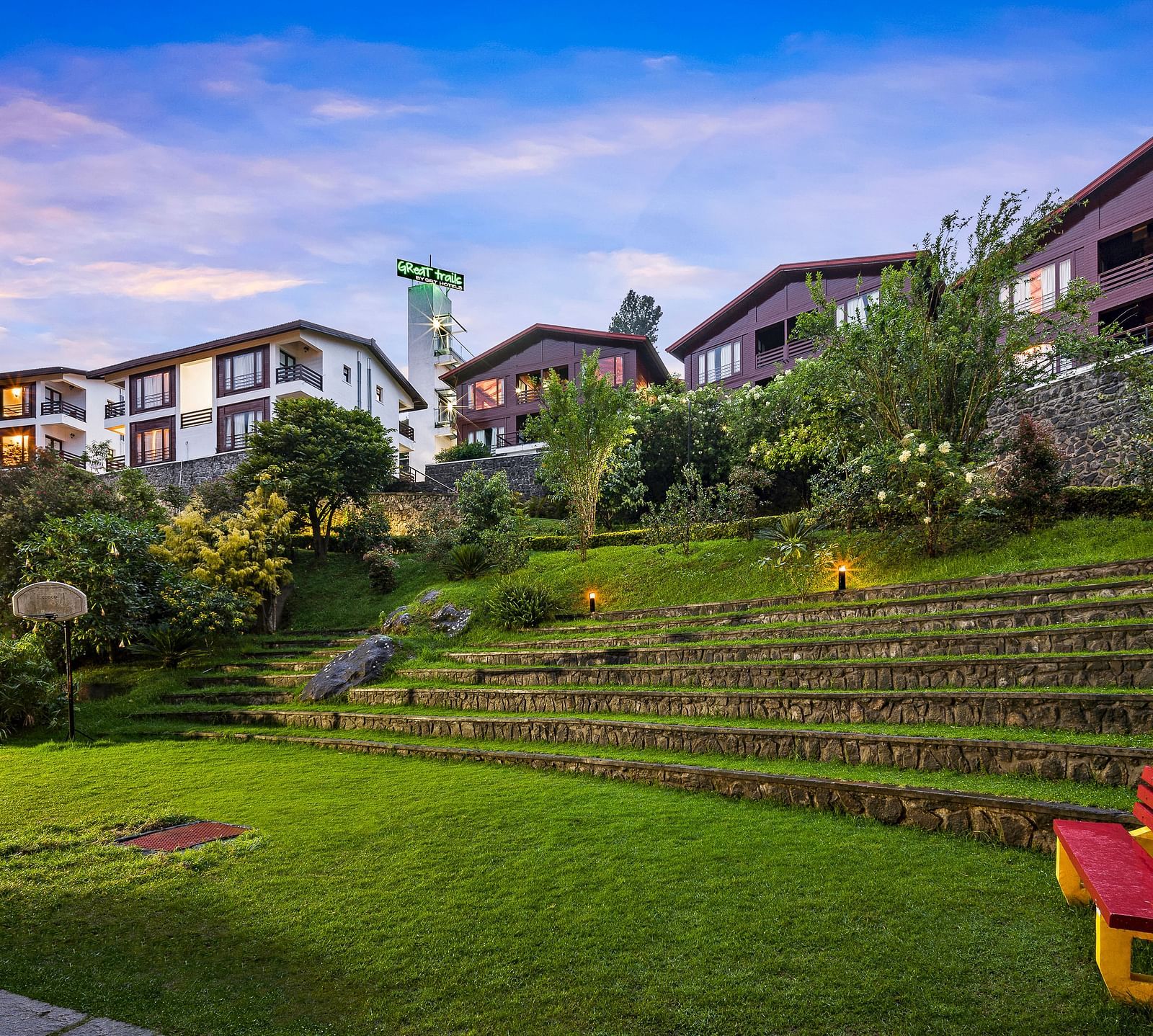
GReaT trails Kodaikanal by GRT Hotels
At our hotel in Kodaikanal, waking up is the main character energy. Think misty mornings, cloudy skies, the scent of piping hot chai in the air, and your loved one by your side—basically, a Yash Raj film waiting to happen. Perched amidst rolling green hills, our 36 charming rooms open out to nature’s stage, with chirping birds for background vocals. Whether you're travelling with kids, grandparents, or your four-legged drama queens (pets), we’ve built this place to host all your filmi moments. Our dining space? Let’s just say the wind might just whistle your name while you eat. Add to that a lineup of endless activities and fresh mountain air, and you've got the perfect hilltop escape. So go ahead—pack your bags, bring the whole cast, and let the hill-station blockbuster begin!
 OURDivine Destinations
OURDivine Destinations
TRAVEL THROUGH THE MUSEUMS OF FAITH 🛕
_65653f2f)
KURINJI ANDAVAR TEMPLE ✨
Blooming with divinity and natural wonder, this serene hill temple dedicated to Lord Muruga is famed for the rare Kurinji flower that blossoms once every 12 years.
Distance from Our Hotel6 km
Timing6:00 a.m. to 1:00 p.m.
3:00 p.m. to 7:00 p.m.FestivalVaikashi Visakam: (Apr-May)
Sacred Food OfferedHoney and Thinai (Foxtail Millet)
Transportation CostFor assistance, please contact the front desk.
Disclaimer: The temple's timings are subject to change as per the operating committee's decisions.
About Kurinji Andavar Temple:
- Located approximately 6 km from Kodaikanal Lake, the temple is easily accessible and frequently visited by pilgrims and tourists alike.
- The temple is dedicated to Lord Muruga, who is revered as the ‘God of the Hill’.
- In Tamil, ‘Kurinji’ refers to a hill region, while 'Andavar' means God; hence, the temple's name reflects its spiritual and geographical roots.
- The temple is uniquely associated with the Kurinji flower, a rare bloom that flowers only once every 12 years in the surrounding hills.
- The last recorded bloom of the Kurinji flower occurred in 2004, and it is believed that honey harvested during a bloom year possesses medicinal properties.
- Apart from spiritual significance, the temple offers breathtaking panoramic views of both the Palani Hills and the Vaigai Dam, making it a notable scenic viewpoint.
- The temple plays a vital role during the Summer Festival, held every May, attracting large numbers of devotees and travellers seeking blessings and festive experiences.
Divine Facts:
Perched in the misty hills of Kodaikanal—somewhere between floating clouds and full-on drama—sits a temple that proves love can literally move mountains. Built in 1936, the Kurinji Andavar Temple wasn’t just a spiritual pit stop—it was a full-blown romantic mic drop. It all started with Lady Leelavathy Ramanathan, a European woman with a heart so big, she didn’t just embrace Hinduism—she basically adopted it, hosted it, and gave it a prime property address in the hills. She married Ponnambalam Ramanathan, the former solicitor-general of Sri Lanka—a man with a job title longer than most resumes. When her husband passed away, Leelavathy didn’t just mourn—she channelled her grief into bricks, devotion, and divine architecture, and built a temple in his honour. And just like that, Sri Kurinji Easware Temple was born. Because clearly, when she mourned, she mourned with marble. But wait, the plot thickens. Enter Husband 2.0—another Tamilian, also named Ramanathan. Coincidence or cosmic convenience? Either way, her initials stayed the same, and the temple tale got a divine sequel. Either way, she gracefully continued as Lady Ramanathan—the sequel. Meanwhile, the temple stood strong, surrounded by pine trees, mountain breeze, and monkeys that probably judged visitors with divine sarcasm. And then came the Kurinji flowers, blooming once every 12 years like shy influencers. The hills go purple, the tourists go wild, and even the temple seems to blush a little extra. Eventually, her granddaughter and husband donated the temple to the Palani Andavar Temple administration—because clearly, this wasn’t just a family legacy; it was a story etched in devotion and decades of love.SRI KUZHANTHAI VELAPPAR TEMPLE ✨
Set amidst the Western Ghats, the Kulanthai Velappar Temple in Poombarai is a centuries-old shrine steeped in legend, mysticism, and the enduring legacy of Siddhar Bogar.
Distance from Our Hotel25 km
Timing6:00 a.m. to 1:00 p.m.
3:00 p.m. to 7:00 p.m.FestivalVaikasi Visakam: (Apr-May)
Transportation CostFor assistance, please contact the front desk.
Disclaimer: The temple's timings are subject to change as per the operating committee's decisions.
About Sri Kuzhanthai Velappar Temple:
- The temple is located in the village of Poombarai, about 18 km from Kodaikanal, nestled within the cool and verdant Western Ghats.
- The village is also famous for its distinctive variety of mountain garlic, of Indian origin, which is often available for sale near the temple entrance.
- As one approaches the temple, the entrance is marked by a grand archway, leading to a spacious courtyard.
- The sanctum sanctorum features a tower built in classic Dravidian architectural style, and the temple complex includes a flagpole, an altar, and a peacock statue, symbolising Lord Muruga’s vahana (divine vehicle).
- This divine episode is also commemorated in a poem/song titled ‘Poombarai Velan’, composed by Sage Arunagiri Nathar.
- According to temple inscriptions, the original structure was built by a Chera King, adding to its historical significance.
- After completing the iconic Palani Andavar statue, the renowned siddhar Bogar is believed to have consecrated another idol here, made from Navapashanam (a mystical amalgam of nine poisons), placed between Palani and Poombarai.
- Some traditions claim that the idol is made from Dasapashanam (ten poisons), enhancing the temple’s spiritual and medicinal lore.
- The site is also known by the name Yanai Gejam or Bogar Kadu, linking it deeply with the legacy of Siddhar Bogar.
- A shrine dedicated to Siddhar Bogar is situated in the southwestern corridor of the temple.
- Upon entering, devotees pass through the mandapam (front hall) and then the karuvarai (inner sanctum) to have darshan of Kuzhanthai Velappar, the divine child.
Divine Facts:
Nestled in the sleepy hills of Poomparai is a temple with more plot twists than a TV serial. This is no ordinary shrine—it’s the Child Velappar Temple, where myth meets miracle, and Lord Murugan makes a heroic cameo as a toddler. The story begins during the Mahabharata era, when the Pandavas were on their epic forest road trip. Somewhere between surviving exile and dodging drama, they stopped at Poomparai and worshipped an idol of Murugan called Gurumooppu, installed by a sage named Bokar. Even back then, Poomparai was clearly a hotspot for spiritual pitstops. Centuries later, the Chera king came along, noticed the Murugan idol, and built a proper mandapam around it—because when royalty gets involved, temples level up fast. Enter Arunagirinathar, Murugan’s number one devotee, poet extraordinaire, and part-time temple sleeper. He stayed at the temple, praying by day and snoozing under sacred roofs by night. All was peaceful—until one particularly eventful night, when a demon decided to show up uninvited, possibly with malicious intent and terrible timing. As the saint slept blissfully, chaos tiptoed in. But just before the demon could do any real damage, Murugan descended—not with peacock, spear, and thunder—but as a child. Yes, a baby version of the god stepped in and defeated the demon, proving once and for all that divine power comes in all sizes. The next morning, Arunagirinathar realised what had happened, had a spiritual upgrade, and the temple got a brand-new name: Child Velappar Temple. A statue of the saint now stands on the premises, reminding visitors that celestial baby-sitting is real—and surprisingly effective. Today, people come here to pray for children, miracles, or just a little divine backup. And honestly, if Murugan can take down demons in baby form, your Monday blues don’t stand a chance.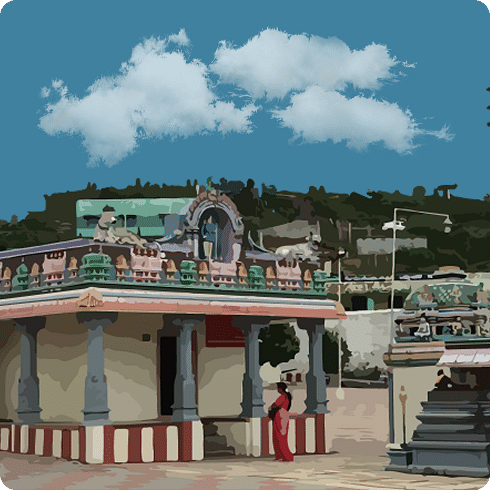
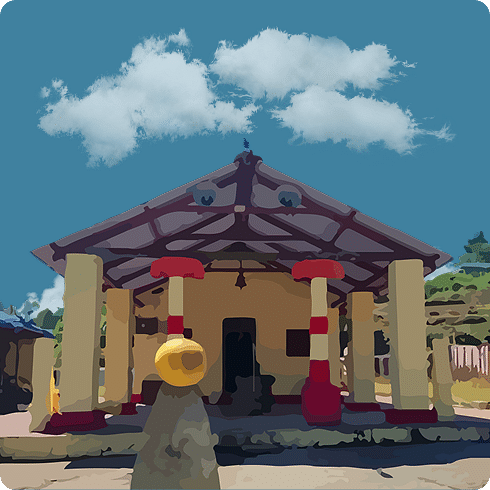
SRI VETRI VELAPPAR TEMPLE ✨
With its unique Navapashanam idol sculpted by Siddhar Bogar and rare architectural elements, the Kulanthai Velappar Temple in Poombarai stands as a sacred blend of legend, devotion, and early Chera artistry.
Distance from Our Hotel4 km
Timing6:00 a.m. to 1:00 p.m.
3:00 p.m. to 7:00 p.m.FestivalVaikasi Visakam: (Apr-May)
Transportation CostFor assistance, please contact the front desk.
Disclaimer: The temple's timings are subject to change as per the operating committee's decisions.
About Sri Vetri Velappar Temple:
- While sculpting the idol, Sage Bogar is said to have focused extensively on perfecting the facial features of the deity. Due to time constraints, he gave only rough finishing to the rest of the body, resulting in the distinct contrast between the intricately detailed face and the more modestly rendered body.
- The idol depicts Kulanthai Velappar, a youthful, ascetic form of Murugan, devoid of ornaments or long hair, symbolising spiritual renunciation in divine innocence.
- A shrine dedicated to Siddhar Bogar is located in the southwestern corridor of the temple. According to legend, this shrine is linked by a secret tunnel to a cave deep within the hill, where Bogar is said to remain in eternal meditation, accompanied by eight hidden Murugan idols.
- Over time, the idol and its worship fell into neglect and were gradually overtaken by the surrounding forest.
- Between the 2nd and 5th centuries AD, a Chera king named Perumal became separated from his hunting party and was compelled to rest at the foot of the hill.
- That night, Murugan is believed to have appeared to King Perumal in a dream and instructed him to locate and restore the lost idol.
- The king eventually discovered the overgrown shrine and ordered the construction of the temple that now houses the idol. He also re-established the worship of Kulanthai Velappar.
- The temple’s sanctum sanctorum faces east and follows early Chera architectural style, featuring no gopuram (tower), which is unusual in comparison to other South Indian temples.
- The main idol stands upon a stone pedestal framed by a simple arch. In front of the sanctum are the Bali Peetham and flag staff, both aligned with Murugan’s peacock mount (vahanam), which faces the deity.
- A sub-shrine located near the sanctum holds the metal Utsava idols of Lord Ganesha and Subramanya (Murugan) along with his consorts, used during temple festivals and processions.
- The inner walls (Koshta) around the sanctum feature rare carvings of Nataraja (Lord Shiva as the cosmic dancer) and Dattatreya—a unique inclusion, as depictions of Dattatreya in such spaces are uncommon in Tamil temple architecture.
- The temple also includes sub-shrines dedicated to several deities: Shiva Linga, Ganesha, Navagraha (the nine planetary deities), Bhairava, Idumban, Dakshinamurti, and serpent deities (Nagas), making it a spiritually diverse sacred complex.
Divine Facts:
Up in the scenic drama that is Poombarai—just a misty scooter ride away from Kodaikanal—stands the Kulanthai Velappar Temple, where Lord Murugan shows that age is just a number… especially when you’re a toddler with divine power. It all began when Saint Arunagirinathar, the revered poet-saint devoted to Murugan, arrived in Poombarai. Between writing devotional hits like Poombarai Velan and soaking in the hills, he decided to spend the night at the temple. Innocent plan. Peaceful prayer. Good night’s sleep. What could go wrong? Cue the demon. Yes, some full-time villain decided to drop by at midnight, thinking he could mess with a saint. But little did he know, this temple came with built-in security—Murugan in baby mode. No peacock. No six-pack. Just a divine toddler who probably still had milk teeth but zero tolerance for demonic nonsense. Demon? Gone. Arunagirinathar? Protected. And thus, the temple got its name: Kulanthai Velappar—the Baby God with Big Energy. Now, the idol here isn’t just sacred—it’s literally toxic in the coolest way possible. Crafted by the legendary Siddhar Bogar, the idol is made from Navapashanam—an alchemical blend of nine potent substances believed to hold immense medicinal and spiritual power. Some traditions even suggest it may be Dasapashanam, incorporating ten elements, adding to the mystical allure. The region, often referred to as Yanai Gejam or Bogar Kadu, is steeped in lore, where Bogar is said to have performed divine alchemy, transforming rare elements into sacred idols of Murugan.
